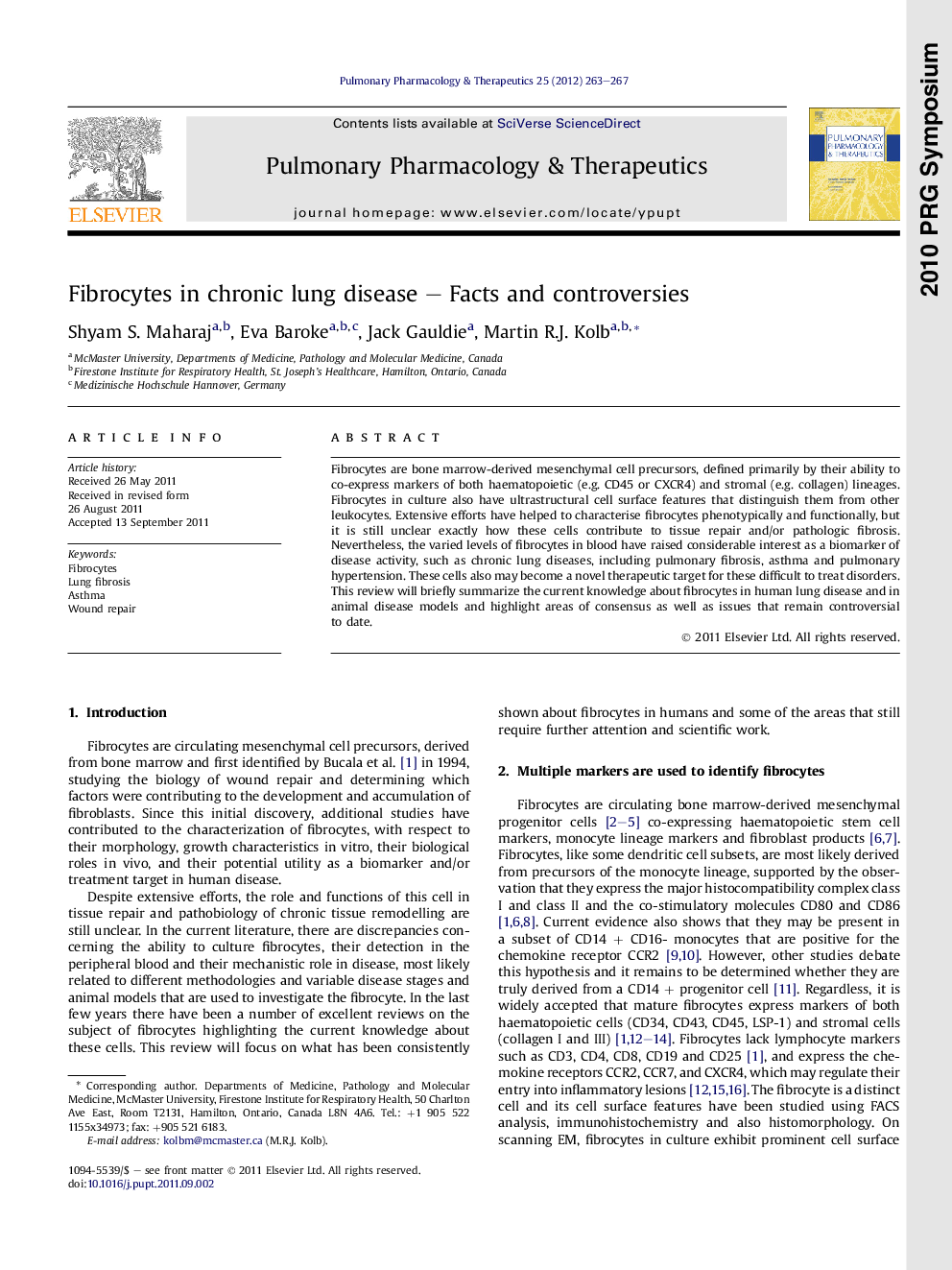| Article ID | Journal | Published Year | Pages | File Type |
|---|---|---|---|---|
| 2567118 | Pulmonary Pharmacology & Therapeutics | 2012 | 5 Pages |
Fibrocytes are bone marrow-derived mesenchymal cell precursors, defined primarily by their ability to co-express markers of both haematopoietic (e.g. CD45 or CXCR4) and stromal (e.g. collagen) lineages. Fibrocytes in culture also have ultrastructural cell surface features that distinguish them from other leukocytes. Extensive efforts have helped to characterise fibrocytes phenotypically and functionally, but it is still unclear exactly how these cells contribute to tissue repair and/or pathologic fibrosis. Nevertheless, the varied levels of fibrocytes in blood have raised considerable interest as a biomarker of disease activity, such as chronic lung diseases, including pulmonary fibrosis, asthma and pulmonary hypertension. These cells also may become a novel therapeutic target for these difficult to treat disorders. This review will briefly summarize the current knowledge about fibrocytes in human lung disease and in animal disease models and highlight areas of consensus as well as issues that remain controversial to date.
